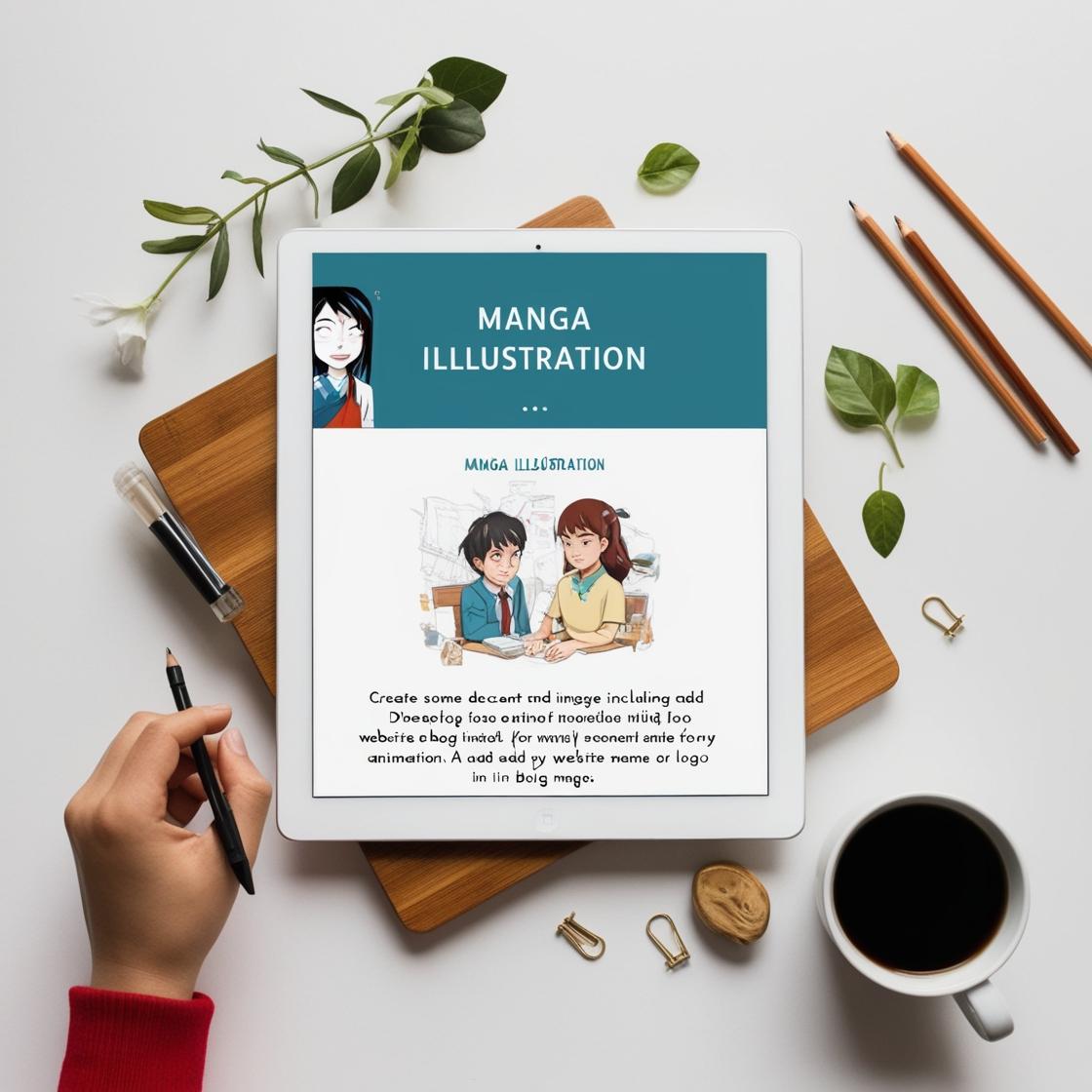How Can You Create Expressive Manga Character Design?

Understanding Expressiveness in Manga Character Design
Expressive manga character design involves capturing the nuances of emotions and personality traits in your characters. It's about creating a visual language that conveys feelings without relying solely on dialogue. Key elements that contribute to expressiveness include facial features, body language, and unique character designs.
Facial Features
The face is the primary medium for conveying emotion. In manga illustration, artists often exaggerate facial features to emphasize feelings. Here are a few ways to utilize facial expressions effectively:
-
Eyes: The eyes are often referred to as the "windows to the soul." In manga, the size, shape, and detail of the eyes can communicate a wide range of emotions. For instance, large, sparkling eyes can indicate excitement or joy, while narrowed or shadowed eyes may suggest anger or sadness.
-
Mouth: The shape and position of the mouth can drastically alter a character’s expression. A simple curve can indicate happiness, while a downward turn can signify displeasure. Experimenting with different mouth shapes can add depth to your characters' emotions.
-
Eyebrows: Eyebrow positioning can enhance the expressiveness of a character's face. Raised eyebrows can indicate surprise or curiosity, while furrowed brows can convey frustration or confusion. Adjusting these subtle features can greatly influence how a viewer interprets a character's feelings.
Body Language
Body language is another crucial aspect of manga character design. How a character poses or moves can reveal their emotional state and intentions. Consider the following elements when illustrating body language:
-
Posture: A character standing tall with an open stance may convey confidence, while slouched shoulders might suggest defeat or insecurity. Pay attention to how posture influences the overall impression of your character.
-
Gestures: Hand movements and gestures can also communicate emotions. For example, clenched fists can indicate anger or determination, while open hands may suggest openness and vulnerability. Incorporating specific gestures can enhance your character's expressiveness.
-
Proximity: The distance between characters can influence emotional dynamics. Characters standing close together may imply intimacy or tension, while distance can signify conflict or isolation.
Unique Character Designs
Creating unique character designs can set your manga apart and make your characters more memorable. Consider these aspects when designing your characters:
-
Silhouette: A distinct silhouette can make a character easily recognizable. Experiment with different shapes and proportions to develop a strong visual identity for your characters.
-
Color Palette: Color choices can influence how readers perceive a character's personality. Bright, vibrant colors might suggest a cheerful or energetic character, while darker shades can indicate mystery or seriousness.
-
Accessories and Clothing: The way a character dresses can reflect their personality and background. Accessories can also serve as visual storytelling tools, offering insights into a character's lifestyle or interests.
Techniques for Creating Expressive Manga Characters
To develop your skills in creating expressive manga character design, consider incorporating the following techniques into your practice:
1. Study Real-Life Emotions
Observing real people and their emotional expressions can significantly improve your ability to capture expressiveness in your characters. Spend time studying the faces and body language of people around you. Take note of how different emotions manifest physically and practice sketching these expressions to enhance your understanding.
2. Utilize Reference Materials
Reference materials, such as photographs, movies, or even animated shows, can provide valuable insights into character expressiveness. Analyze how other artists portray emotions and what techniques they use to convey feelings effectively. This study will help you find inspiration and develop your style.
3. Experiment with Different Styles
Don't be afraid to experiment with various art styles to find what resonates with you and best suits your characters. Different styles can evoke different emotions; a more exaggerated style may enhance expressiveness, while a more realistic approach may lend itself to subtlety. Finding your unique voice will help your characters stand out.
4. Create Character Profiles
Before diving into character design, create detailed profiles for your characters. Consider their backgrounds, motivations, and emotional struggles. Understanding your characters on a deeper level will allow you to depict their emotions more authentically in your manga illustration.
5. Practice, Practice, Practice
Like any skill, mastering manga character design requires consistent practice. Dedicate time to sketching different facial expressions, poses, and character designs. The more you practice, the more intuitive your understanding of expressiveness will become.
Examples of Expressive Manga Characters
Throughout the history of manga, many famous manga illustrators have created characters known for their expressiveness. Characters like Naruto Uzumaki from Naruto and Monkey D. Luffy from One Piece are exemplary of how unique character designs and emotional depth can make characters unforgettable. These characters’ journeys and expressions resonate with audiences, showcasing the importance of expressiveness in manga.
Analyzing Famous Manga Illustrators
Studying the works of famous manga illustrators can provide valuable lessons on expressiveness. For example, Akira Toriyama, the creator of Dragon Ball, utilizes exaggerated features and dynamic poses to convey emotions effectively. Similarly, Rumiko Takahashi, known for Inuyasha, masterfully captures subtle emotions through her characters' expressions and interactions.
By analyzing these artists' techniques and understanding their approaches to character design, you can apply similar principles to your own work, enhancing the expressiveness of your manga characters.
Conclusion
Creating expressive manga character designs is essential for captivating storytelling. By focusing on facial features, body language, and unique character designs, you can craft characters that resonate with readers emotionally. Techniques such as studying real-life emotions, utilizing references, and practicing consistently will help you master the art of expressiveness in your manga illustration.
- Questions and Answers
- Opinion
- Story/Motivational/Inspiring
- Technology
- Art
- Causes
- Crafts
- Dance
- Drinks
- Film/Movie
- Fitness
- Food
- Games
- Gardening
- Health
- Home
- Literature
- Music
- Networking
- Other
- Party
- Religion
- Shopping
- Sports
- Theater
- Wellness
- News
- Culture
- War machines and policy

